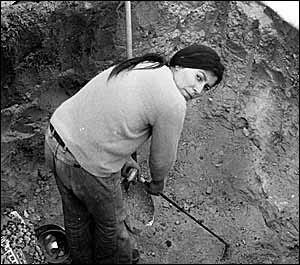
American Indian Movement activist Anna Mae Pictou-Aquash is seen in this photo on the Pine Ridge Reservation in South Dakota. Photo © KM/SIPA Press
The New York Times offers two more sources to learn about American Indian Movement activist Anna Mae Pictou Aquash -- The Life and Death of Anna Mae Aquash
Johanna Brand, a Canadian journalist and the author of “The Life and Death of Anna Mae Aquash,” spent a year in the late 1970s talking to Aquash’s friends and family. Brand’s brief biography vividly describes Aquash’s early years in a community of Mikmaq Indians in Nova Scotia, where she lived in a small hut without electricity or running water. By her early 20s, Aquash had moved to Boston and was married and raising two young daughters. It was here that she began to work as a community organizer, helping other Mikmaq Indians find work, housing and counseling services. Later, she taught at an Indian cultural center in Maine. Brand’s book was first published in 1978, years before anyone was found criminally responsible for Aquash’s murder. In 1999, Antoinette Nora Claypoole, a teacher and Native American activist, published “Who Would Unbraid Her Hair: The Legend of Annie Mae.” Claypoole’s unconventional biography explores Anna Mae’s deep commitment to Native American rights and uses a mix of poetry and prose to describe Aquash’s life and the circumstances surrounding her death.Get the Story:
The 6th Floor: More on the Life and Times of Anna Mae Aquash (The New York Times 4/30)
Related Stories
New York Times magazine runs feature on Anna Mae
Aquash (4/25)
Join the Conversation
